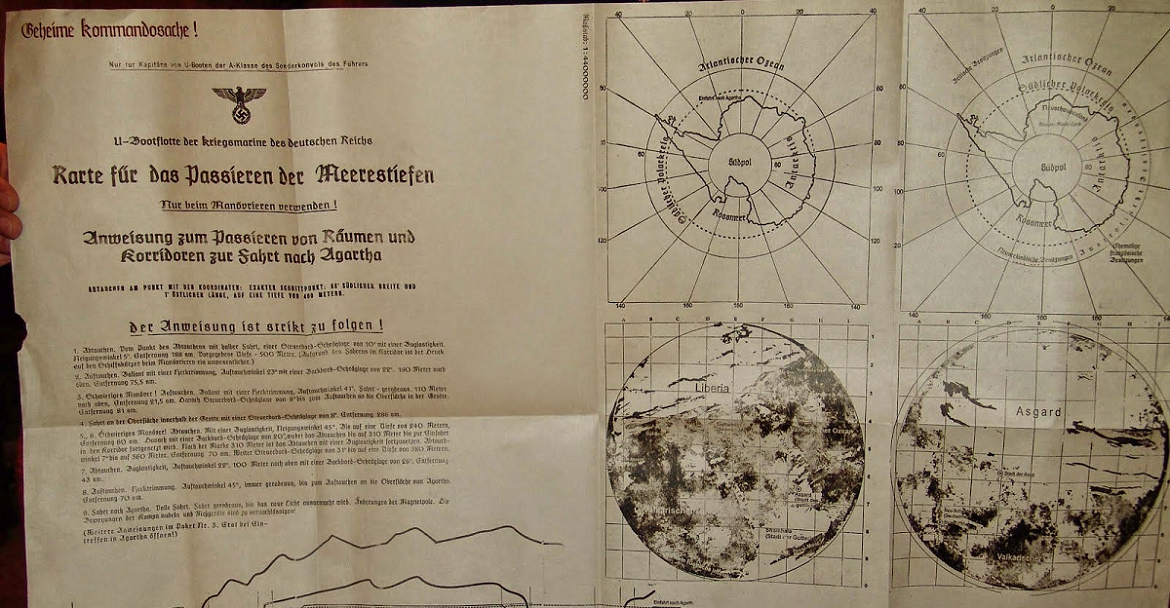The Nazi fascination with a hidden world

One of the most bizarre and intriguing aspects of Nazi history is their fascination with the occult and the paranormal. The Nazis believed that they were destined to rule the world, and they sought to uncover any secrets or mysteries that could help them achieve their goal. One of these secrets was the possibility that the Earth was hollow, and that a hidden civilization existed within it.
The hollow Earth theory is not a new idea. It has been proposed by various thinkers and writers for centuries, and it has inspired many works of fiction, such as Jules Verne’s A Journey to the Center of the Earth. The theory suggests that there are openings at the North and South poles that lead to an inner world, where a different sun illuminates a lush landscape inhabited by ancient races or exotic creatures. Some versions of the theory also claim that there is a central sun that rotates and creates the illusion of day and night for the inner dwellers.
The Nazis were particularly interested in the hollow Earth theory because they believed that it was connected to their own origins and destiny. They subscribed to a version of the theory called hohlweltlehre, which means “inverted Earth”. According to this idea, we live on the inside of a hollow sphere, and the stars are actually ice crystals suspended in the air. The Nazis also believed that they were descended from a superior race of Aryans who came from a subterranean realm called Agartha, where they still lived under the rule of a king of the world.
To prove their theory and establish contact with their ancestors, the Nazis launched several expeditions to Antarctica, where they hoped to find an entrance to the inner Earth. The most famous of these expeditions was led by Captain Alfred Ritscher in 1938-1939, who claimed to have discovered a warm lake and ice-free land in an area called Neuschwabenland. The Nazis also allegedly built a secret base there, called Base 211, where they conducted research on advanced technologies such as flying saucers and anti-gravity devices.
There are many rumors and legends about what happened to the Nazi Antarctic mission after World War II. Some say that Hitler and some of his top officials escaped to Base 211 and entered the inner Earth, where they were welcomed by their Aryan brethren. Others say that the Nazis never found an entrance to the inner Earth, and that their base was destroyed by Allied forces or by natural disasters. Still others claim that during World War II, a group of Nazi scientists and soldiers embarked on a secret mission to Antarctica, where they believed they could access the inner earth through a hole in the ice. Their goal was to establish contact with the inhabitants of Agartha.
The evidence for this claim is based on some dubious sources, such as a supposed letter from a U-boat crew member who said he had reached the inner earth and would not return, and some maps that allegedly show the Nazi route to Agartha. These maps also depict the inner earth as a concave sphere, with an inner sun and continents on the opposite side of the surface.
The truth behind these stories is hard to verify, as there is little evidence or documentation to support them. Most historians dismiss them as fantasies or propaganda, and regard the Nazi hollow Earth theory as a pseudoscientific myth. However, some researchers and enthusiasts continue to explore the possibility that there is more to the Nazi Antarctic mission than meets the eye, and that there might be some truth to the existence of an inner world.
Sorry, the comment form is closed at this time.